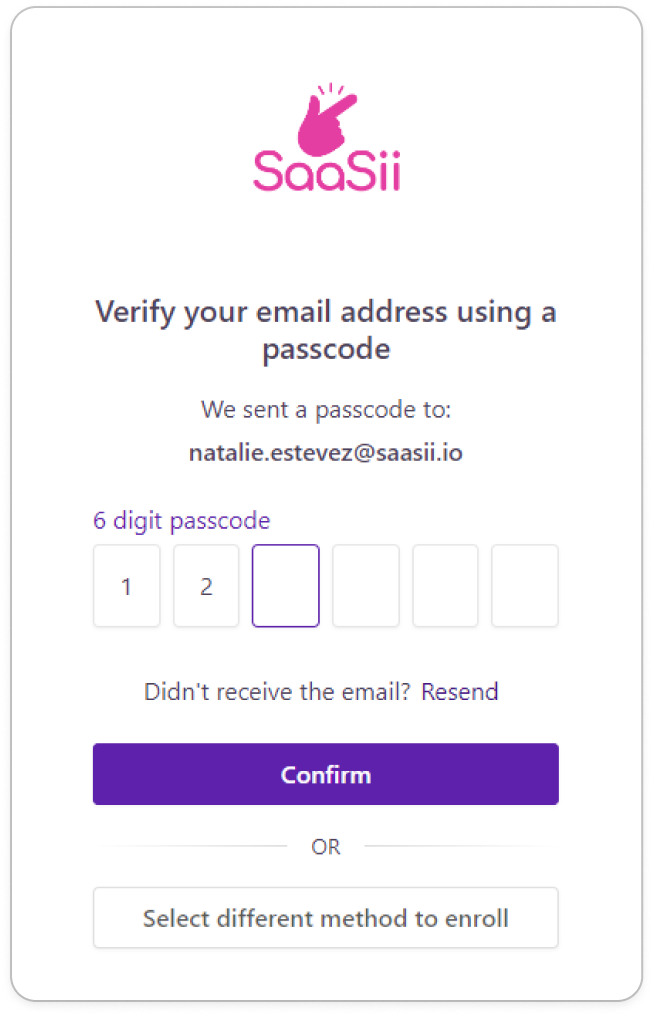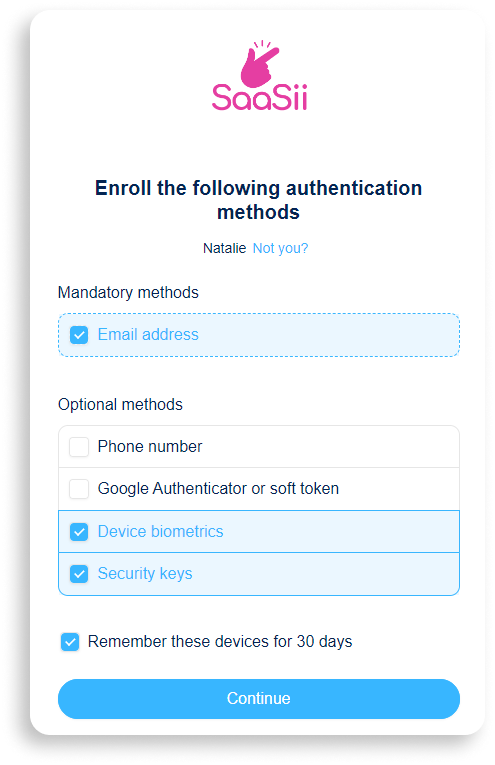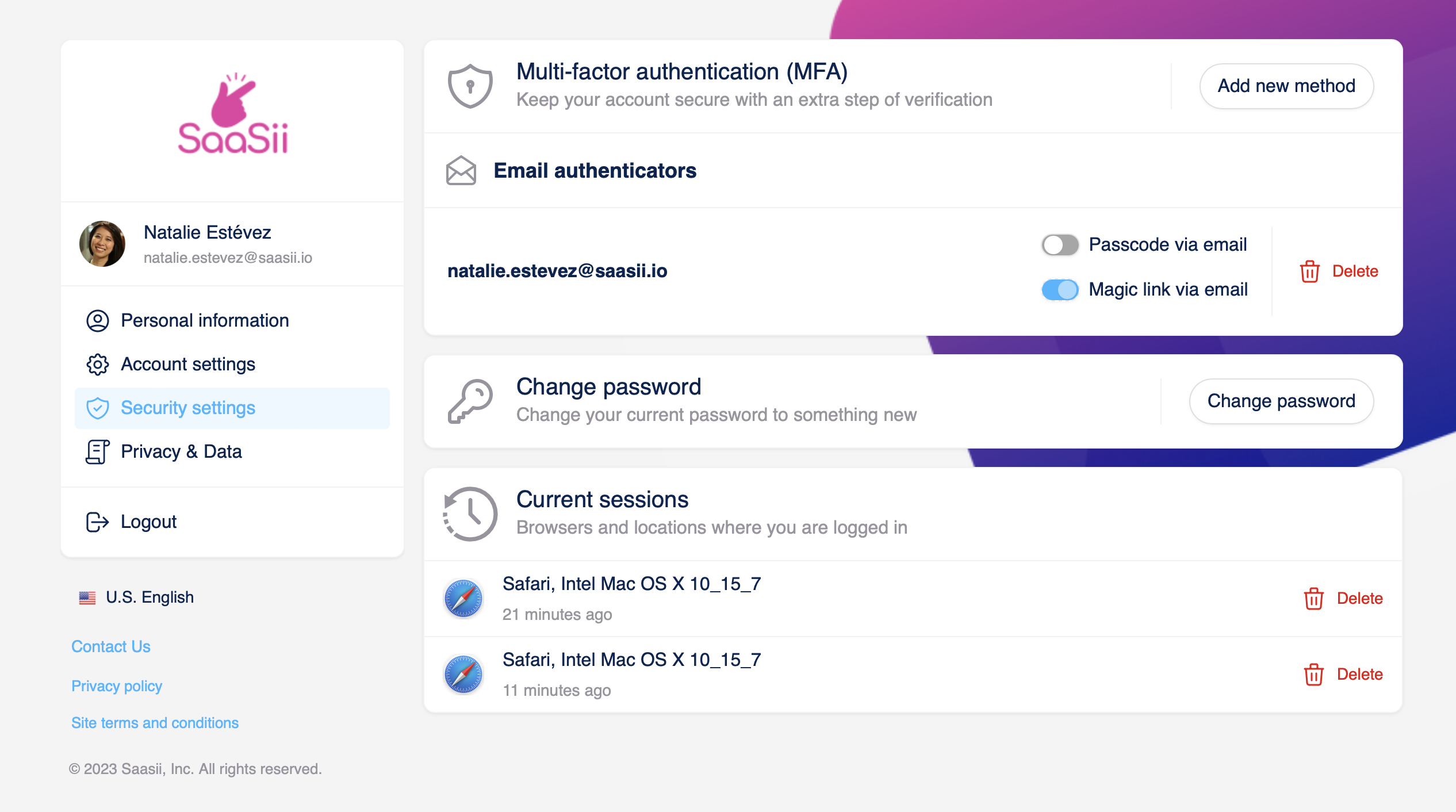Multi-factor methods
Manage your policy's secondary authentication methods here.
Supported multi-factor methods
Multi-factor authentication (MFA) provides an additional layer of security beyond just a (single-factor) username and password-based authentication. You can have your customers take steps to protect their online identities against threats such as unauthorized access, account takeover or hijacking, and fraudulent transactions.
You can configure the following MFA methods in the Admin Console:
| Method Type | Security Posture | Ease of Adoption | Coverage | Usability |
|---|---|---|---|---|
| Password | Weak | Easy | Broad | Easy |
| Voice Call OTP | Moderate | Easy | Broad | Medium |
| SMS OTP | Moderate | Medium | Broad | Medium |
| Email OTP | Moderate | Medium | Broad | Medium |
| SMS Magic Links | Strong | Easy | Medium | Easy |
| Email Magic Links | Moderate | Easy | Broad | Easy |
| Google Authenticator or other Soft Token | Strong | Medium | Medium | Medium |
| FIDO2 Platform Biometric Authenticator | Strong | Easy | Medium | Easy |
| FIDO2 Security Key | Strong | Medium | Broad | Easy |
Email & phone factors
Email and phone authenticator settings
| Passcodes via email | Sends a one-time passcode to the customer's confirmed email address. |
| Magic links via email | Sends a one-time expirable link to the customer's confirmed email address. |
| Passcode via text message or voice call | Sends a one-time passcode by default, or initiates a voice call per request to the customer's confirmed phone number. Customers can ask for a voice call in their authentication workflow. |
| Magic links via text message | Sends a one-time expirable link to the customer's confirmed phone number. |
Factor restriction
You can choose which factors to allow under email and phone method authentication, or allow both available factors per method.
Authenticator restriction checkboxes
Restrict customers to enroll only the email address(es) or phone number(s) as secondary authenticators that are already added to their account as an identifier or personal information.
Passcode & Magic Link parameters
Here, you can set the lifetime of different authenticator tokens delivered via email or phone.
| Passcode Lengths | Specifies the character length of the one-time passcodes for both email and phone number-based methods. Recommended minimum length: 6 characters (digits) by default. Maximum length: 8 characters. |
| Passcode Lifetimes | Specifies the character length of the one-time passcodes for both email and phone number-based methods. Recommended minimum length: 6 characters (digits) by default. Maximum length: 8 characters. |
| Magic Link Lifetime | Decides the lifetime of Magic Links for both email and phone-based methods. The lifetime of a Magic Link starts from the time the message has been sent out. Strivacity invalidates the Magic Link once its lifetime has been exceeded. In this case, customers will have to restart the login process. |
Passcode input field component
By default, single input fields are provided for customers to enter their one-time passcodes (OTPs). You can change the format of the OTP fields to segmented digit inputs for a more organized layout and intuitive experience. You can do this by configuring the one-time passcode component in the Style editor.

Segmented digit view for OTP input
Google Authenticator or other soft token authenticator apps
Enable the Google Authenticator or other soft token authenticator apps as a secondary authenticator option for your customers. Customers will receive their temporary one-time passcodes via the application.
Soft token authenticator settings
| Label Name | You can help customers identify which token to look for in their authenticator app by adding a descriptive name. This way they will spot more easily which temporary token to use for your application. If there is no Label Name added, the soft token label in the authenticator application will default to the brand name specified in the application's branding policy. |
See Setup and Manage Customer Notification for further information on how to customize and brand the Adaptive Access notification email and text messages.
FIDO2 authenticators
You can offer FIDO2-based authentication options for your customers by enabling platform biometric authentication or security key enrollment for your application.
Platform biometric authenticator and security key authenticator settings
Platform biometric authenticator
If enabled, you allow customers to enroll the biometric information as an authenticator of the device they are currently using to access your application.
The customer's enrollment and authentication experience will slightly vary depending on the biometric security system they have installed in their devices.
Security key
If enabled, you allow customers to enroll a roaming authenticator such as a security key (YubiKey, Titan Security Key) or a FIDO-compliant mobile device as an authenticator.
The customer's enrollment and authentication experience will slightly vary depending on the browser and OS the customer is using.
Passkey
If enabled, customers will have the option to authenticate using a passkey.
Passkeys provide a secure and customer-friendly alternative to traditional password and MFA methods. Passkeys allow two factors of authentication—something you have (your device) and something you are (your fingerprint or face)—to be combined in a single step, eliminating the need for passwords or less secure and convenient methods like email and SMS.
MFA enrollment configuration
Enable or disable MFA methods, prompt your customers to enroll in an MFA method of their choice, or request them to enroll in multiple authentication methods.
One multi-factor method always needs to be enabled for your adaptive access workflow.
Optional MFA
You can leave it up to customers to decide whether they want to secure their accounts with certain MFA methods or not.
Customers can run into optional MFA methods
- during registration (always)
- alongside mandatory methods
- in the self-service account
Customers are allowed to enroll optional MFAs in the same flow while they’re adding mandatory methods. For example, you can allow device-based authentication (optional FIDO2) without pushing it, while you also confirm their email address (mandatory email MFA).

Mandatory and optional MFA enrollment
Once logged in, customers can manage factors for each enrolled authentication method in their self-service portal:

Self-service portal security settings
Your customer service can assist customers with MFA enrollment (every method except for platform biometric and security key enrollment) from the customer's account in the Admin Console.
Mandatory MFA
You can request customers to enroll in the selected MFA methods at registration or at the next login to enhance the security of their accounts.
You can require multiple MFA methods from your customers at the same time. Customers will enroll in the following order if the method is required: email authentication first, then phone, soft token, device biometrics, and security key.
If there are multiple mandatory MFA methods, customers are required to enroll in each method. Customers will only be stepped up to one of the enrolled methods during future logins.
Additional settings
Additional settings
Make at least one optional method mandatory at the next login or registration:
When selected, your customers will be required to enroll in one of the optional authentication methods before continuing in their registration or login workflow.
This option is only available if there are no mandatory methods selected.
Skip the MFA selection screen when there is only one method registered:
This setting can reduce friction in authentication journeys. When selected, the MFA selection screen will be skipped if customers only have one MFA method enrolled.
Updated over 1 year ago
